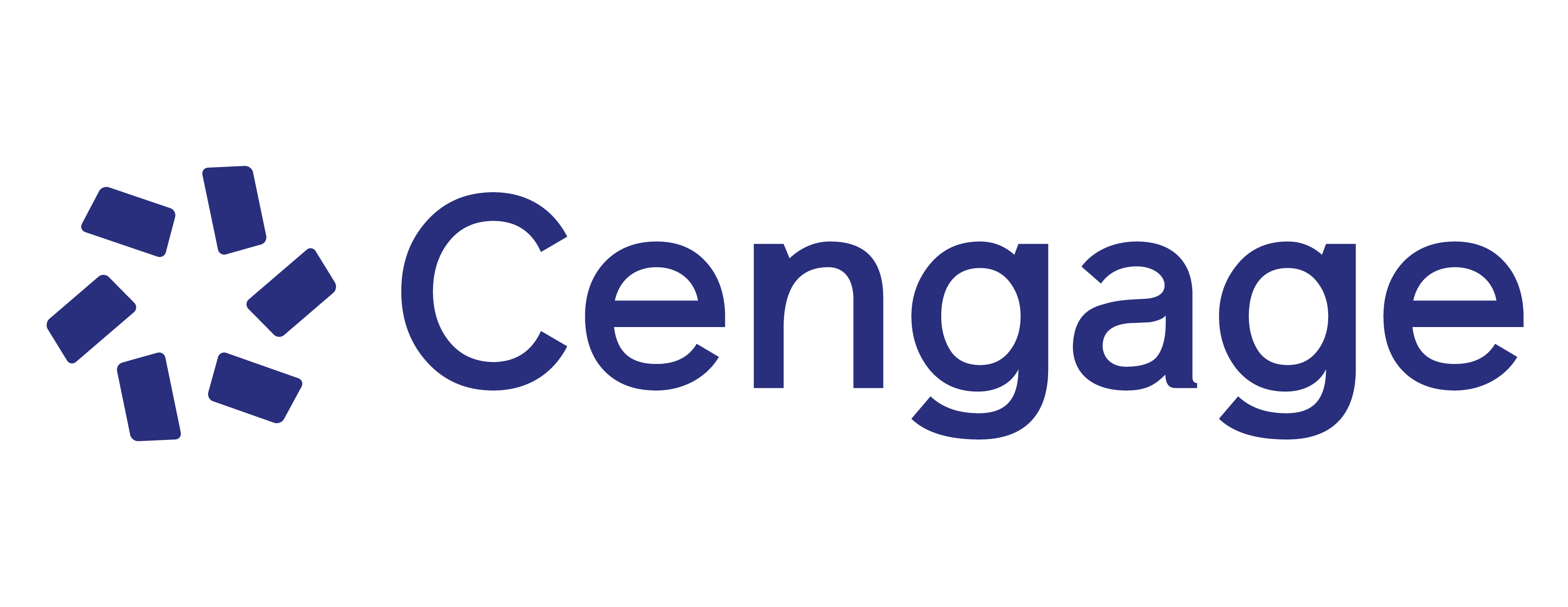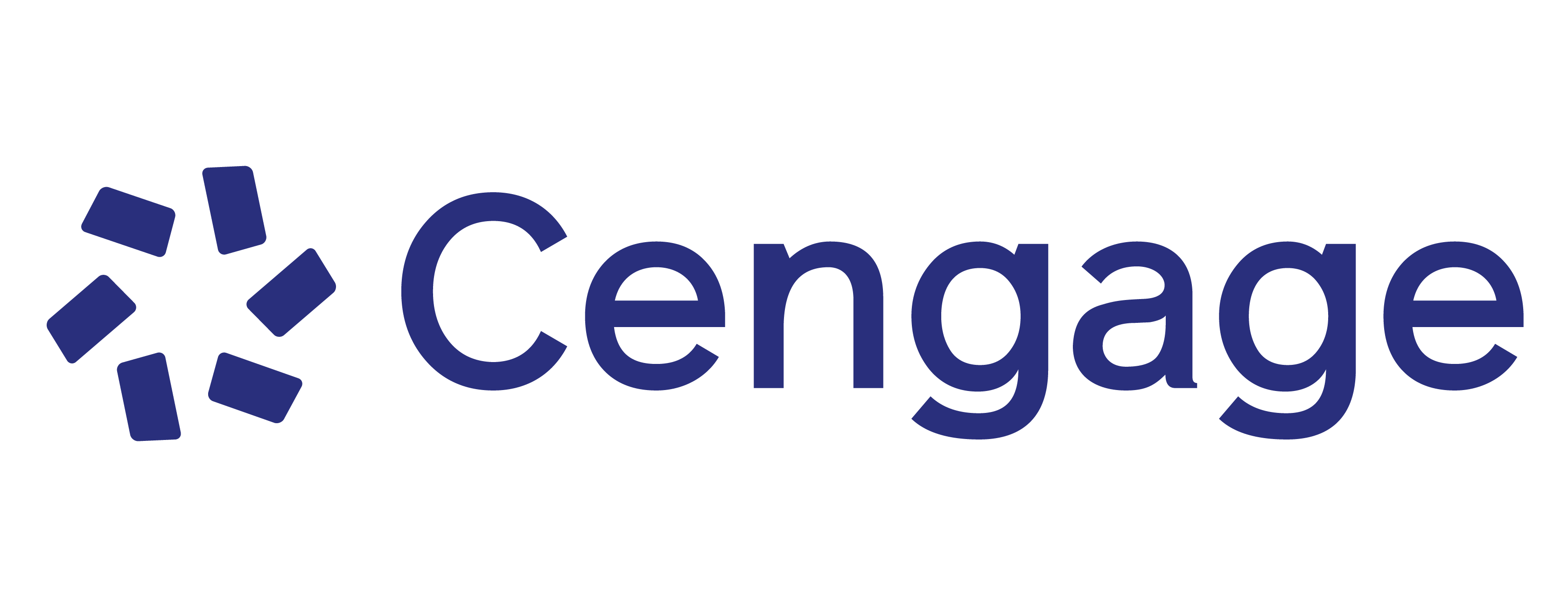Written for today's technology student, TECHNICAL CALCULUS WITH ANALYTIC GEOMETRY prepares you for your future courses! With an emphasis on applications, this mathematics text helps you learn calculus skills that are particular to technology. Clear presentation of concepts, detailed examples, marginal annotations, and step-by-step procedures enhance your understanding of difficult concepts. Notations that are frequently encountered in technology are used throughout to help you prepare for further courses in your career.
1. INTRODUCTION TO ANALYTIC GEOMETRY.
The Cartesian Coordinate System. The Slope. The Straight Line. Curve Sketching. Discussion of Curves with Graphing Utilities. The Conics. The Circle. The Parabola. The Ellipse. The Hyperbola. Translation of Axes; Standard Equations of the Conics. Review Exercises.
2. INTRODUCTION TO CALCULUS: THE DERIVATIVE.
Functions and Intervals. Limits. The Derivative. The Derivative by the Four-Step Process. Derivatives of Polynomials. Instantaneous Rates of Change. Differentiation Formulas. Implicit Differentiation. Higher Derivatives. Review Exercises.
3. APPLICATIONS OF THE DERIVATIVE.
The First-Derivative Test. The Second-Derivative Test. Exploring with Graphing Utilities. Applications of Minima and Maxima. Related rates. Differentials. Review Exercises.
4. THE INTEGRAL.
Antiderivatives. The Area Problem. The Fundamental Theorem of Calculus. The Integral: Notation and General Definition. Basic Integration Formulas. Area Between Curves. Improper Integrals. The Constant of Integration. Numerical Integration. Review Exercises.
5. APPLICATION OF THE INTEGRAL.
Means of Root Mean Squares. Volumes of Revolution: Disk and Washer Methods. Volumes of Revolution: Shell Method. Centroids. Moments of Inertia. Work and Fluid Pressure. Review Exercises.
6. DERIVATIVES OF TRANSCENDENTAL FUNCTIONS.
Review of Trigonometry. Derivatives of Sine and Cosine Functions. Other Trigonometric Functions. Inverse Trigonometric Functions. Derivatives of Inverse Trigonometric Functions. Exponential and Logarithmic Functions. Derivative of the Logarithmic Function. Derivative of the Exponential Function. L'Hospital's rule. Applications. Newton's Method. Review Exercises.
7. INTEGRATION TECHNIQUES.
The Power Formula Again. The Logarithmic and Exponentials Forms. Trigonometric Forms. Further Trigonometric Forms. Inverse Trigonometric Forms. Integration by Trigonometric Substitution. Integration by Parts. Integration of Rational Functions. Integration by Use of Tables. Additional Remarks. Review Exercises.
8. PARAMETIC EQUATIONS, VECTORS, AND POLAR COORDINATES.
Vectors and Parametric Equations. Arc Length. Polar Coordinates. Curves in Polar Coordinates. Areas in Polar Coordinates. Review Exercises.
9. THREE-DIMENSIONAL SPACE; PARTIAL DERIVATIVES; MULTIPLE INTEGRALS.
Surfaces in Three Dimensions. Partial Derivatives. Applications of Partial Derivatives. Curve Fitting. Integrated Integrals. Volumes by Double Integration. Mass, Centroids, and Moments of Inertia. Volumes in Cylindrical Coordinates. Review Exercises.
10. INFINITE SERIES.
Introduction to Infinite Series. Tests for Convergence. Maclaurin Series. Operations with Series. Computations with Series; Applications. Fourier Series. Review Exercises.
11. FIRST-ORDER DIFFERETIAL EQUATIONS.
What is Differential Equation? Separation of Variables. First-Order Linear Differential Equations. Applications of First-Order Differential Equations. Numerical Solutions. Review Exercises.
12. HIGHER ORDER LINEAR DIFFERENTIAL EQUATIONS.
Higher-Order Homogeneous Differential Equations. Auxiliary Equations with Repeating or Complex Roots. Nonhomogeneous Equations. Applications of Second-Order Equations. Review Exercises.
13. THE LAPLACE TRANSFORM.
Introduction and Basic Properties. Inverse Laplace Transforms. Partial Fractions. Solutions of Linear Equations by Laplace Transforms. Review Exercises.
Appendix A: Tables.
Common Units of Measure. A Short Table of Integrals.
Appendix B: Answers to Selected Exercises.
Index.
-
Peter Kuhfittig
Peter Kuhfittig has taught mathematics at the Milwaukee School of Engineering for over thirty years and has served as head of the department for over half of this period. His enthusiasm for teaching has resulted in an award for excellence in teaching, as well as an interest in textbook writing. He has been involved in applications of mathematics through occasional consulting work. More recently, Dr. Kuhfittig has turned to research in wormhole physics.
-
Approximately 25% new exercises, as well as reordered exercises to yield a more logical sequence for mastering the topics.
-
Expanded use of CAS, particularly in Chapters 7, 12, and 13 to check answers and to aid with performing calculations too cumbersome to do by hand. The use of CAS is not intended to replace traditional techniques. The use of graphing utilities has also been expanded in both examples and exercises.
-
Based on input from reviewers and users of the book, Sections 4.5, 4.7, 7.1, 7.6, and 7.7 were essentially rewritten. In Sections 2.6 and 3.4 new applications to economics have been introduced.
-
Approximately 25% new exercises, as well as reordered exercises to yield a more logical sequence for mastering the topics.
-
Expanded use of CAS, particularly in Chapters 7, 12, and 13 to check answers and to aid with performing calculations too cumbersome to do by hand. The use of CAS is not intended to replace traditional techniques. The use of graphing utilities has also been expanded in both examples and exercises.
-
Based on input from reviewers and users of the book, Sections 4.5, 4.7, 7.1, 7.6, and 7.7 were essentially rewritten. In Sections 2.6 and 3.4 new applications to economics have been introduced.
-
Exercises sets have been carefully revised, with more applied problems added throughout.
-
Additional details have been added to many of the examples, making them more understandable for students.
-
There is a greater emphasis on using CAS to amplify and clarify certain concepts, such as tangent and normal lines, graphing parametric and polar curves, and graphing solutions of differential equations. The use of a computer algebra system (CAS) is suggested from time to time in the exercises. However, their use in the course remains completely optional.
-
The author uses notations frequently encountered in technology, to help prepare students for further courses in their careers.
-
Margin notes are used throughout to identify additional concepts and to explain the steps in the solutions to example problems.
-
The emphasis on applications helps students learn calculus skills that are particular to technology. The applications are complemented with a solid base of drill exercises to ensure that students get practice in basic operations.
-
Important concepts are boxed and labeled for easy reference and review.
-
Each chapter ends with a carefully selected set of review exercises that cover all the topics in the chapter. Answers to all of the review questions are included in the back of the book.
-
Exercises sets have been carefully revised, with more applied problems added throughout.
-
Additional details have been added to many of the examples, making them more understandable for students.
-
There is a greater emphasis on using CAS to amplify and clarify certain concepts, such as tangent and normal lines, graphing parametric and polar curves, and graphing solutions of differential equations. The use of a computer algebra system (CAS) is suggested from time to time in the exercises. However, their use in the course remains completely optional.
-
The author uses notations frequently encountered in technology, to help prepare students for further courses in their careers.
-
The emphasis on applications helps students learn calculus skills that are particular to technology. The applications are complemented with a solid base of drill exercises to ensure that students get practice in basic operations.
-
Margin notes are used throughout to identify additional concepts and to explain the steps in the solutions to example problems.
Solutions Builder for Kuhfittig's Technical Calculus with Analytic Geometry, 5th
9781285053400
Web Site for Kuhfittig's Technical Calculus with Analytic Geometry, 5th
9781285053417


